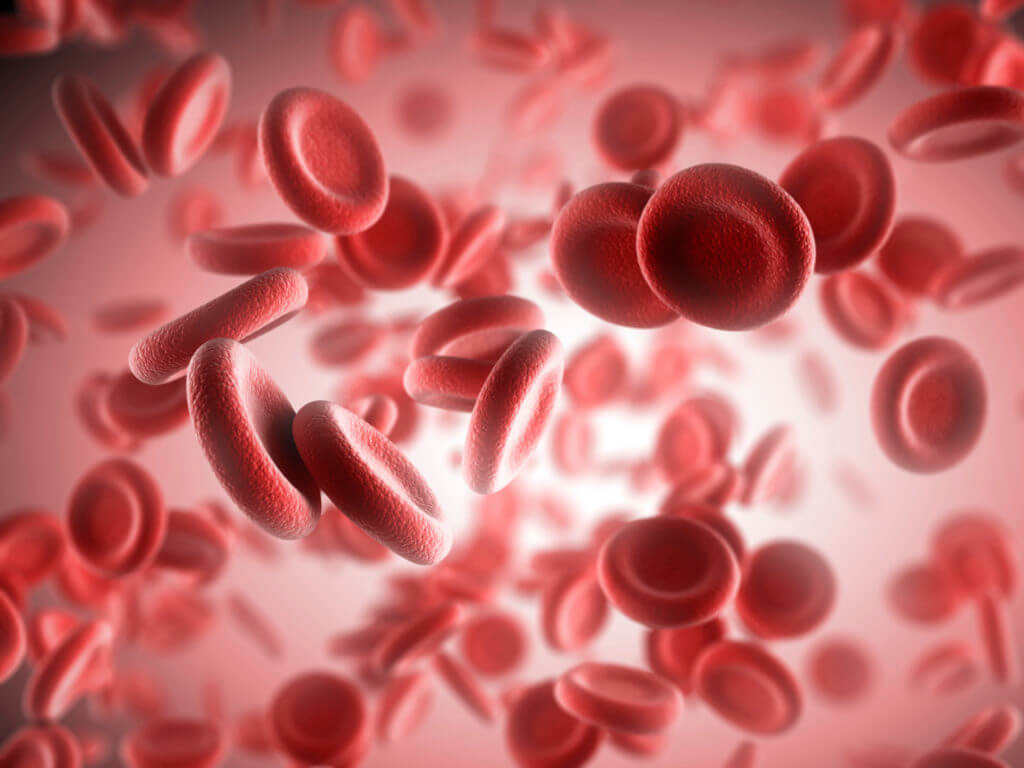Misdiagnosis
When a Blood Clot is Missed

We count on our doctors to look out for our health and ensure we don’t fall victim to unexpected illnesses. However, sometimes, your doctor may fail to diagnose a condition that can lead to substantial harm and even death. When a blood clot is missed, patients can develop deep vein thrombosis, pulmonary embolisms, or cerebral embolisms.
While blood clots have the potential to be extremely dangerous to a person’s health, it’s often easy to treat them when they are found soon enough. If your healthcare providers do not identify the presence of a clot in time, you may suffer the consequences physically, financially, and emotionally. In situations like this, you may have grounds to pursue legal action with the help of an experienced Philadelphia medical malpractice attorney.
Medical Conditions Associated With Blood Clots
Patients can develop blood clots in a number of ways, but one of the most common is via deep vein thrombosis (DVT). DVT is a serious medical condition involving the development of a blood clot in a “deep” vein of your body, usually a leg or arm. The clot can either completely or partially completely block the vein.
DVT can lead to very serious complications, along with another type of blood clot threat called pulmonary embolism (PE). A PE is a condition in which a blood clot travels through the deep vein into the lungs. In some cases, there is a risk of the clot traveling to the heart, which can lead to an immediate heart attack. The clot could also travel to the brain, causing a stroke from a cerebral embolism.
According to the Centers for Disease Control and Prevention (CDC), over 900,000 people experience venous thromboembolism (DVT or PE) every year. Nearly 100,000 die from this condition, and 25% of those die suddenly. As many as half of those who recover from a blood clot also develop a condition called post-thrombotic syndrome, which is often long-term and accompanied by a lot of pain, swelling, and discoloration.
Pulmonary Embolisms and Cerebral Embolisms
DVT clots can break free from the veins in the legs and arms and travel to the lungs, causing a pulmonary embolism (PE). This can be an extremely dangerous condition since blocking the blood vessels that lead to the lungs will cause lung distress and affect the patient’s breathing. A PE can even result in the death of lung tissue.
A cerebral embolism happens when a clot travels into the brain and blocks vessels there. Patients may suffer a stroke and pass away quickly. If they survive, they are likely to experience brain damage that affects their cognitive and physical abilities.
Symptoms of Blood Clots
Nearly half of all blood clots produce no discernible signs or symptoms, but that doesn’t mean they aren’t still dangerous. Your doctor may overlook or ignore symptoms, leading to more complications and injury. When this happens, you could be able to hold them accountable through a medical negligence claim.
Symptoms of a DVT include:
- Mild or moderate swelling in the leg or arm
- Pain in the area that feels like a muscle cramp
- Sensation of warmth along the swollen leg or arm
- Skin discoloration, either reddish or bluish
If they do not review your medical history or conduct a full exam, your healthcare provider may decide these signs are caused by strenuous physical activity or a sports injury. You may need to encourage them to consider a blood clot.
Pulmonary embolisms are often easier to diagnose because the symptoms are more obvious, such as:
- Chest pain or discomfort that worsens with a deep breath
- Coughing up blood
- Dizziness or lightheadedness
- Fainting
- Rapid or irregular pulse
- Sudden shortness of breath
Medical Causes for Developing Blood Clots
While it is technically true that a blood clot can happen to anyone at any time without an apparent cause, there are a number of risk factors for DVT that patients and doctors should be aware of. Among those who are at greatest risk include patients who:
- Have recently been injured
- Had an injury that diminished blood flow to any body part
- Underwent surgery that resulted in a decreased blood flow to any part of the body
- Underwent surgery to any part of the abdomen, chest, hip, knee, or leg, including emergency surgery for a traumatic event
- Underwent orthopedic surgery or surgery to any part of the musculoskeletal system
- Suffered paralysis due to a spinal cord injury
- Were placed on bed rest for more than three days
The risk of developing DVT is not dependent on sustaining a severe physical injury. In fact, nearly 8% of all DVT cases came from minor leg injuries that didn’t even require a cast or immobilization. In some cases, patients developed DVT in cases where they only suffered a sprained ankle or a strained calf muscle. That’s why medical experts say that getting medical help right away is a good idea anytime you suffer a leg injury.
Lifestyle Causes for Blood Clots
In addition to experiencing a blood clot after a medical procedure or treatment, it’s common for individuals to be at risk due to lifestyle and genetic reasons. Taking a thorough history when a patient is treated means reviewing any existing records and asking questions to assess factors that could lead to a blood clot, such as:
- Atrial fibrillation: Having a-fib means your heart beats rapidly and irregularly, which reduces the heart’s ability to push blood through the body, which can lead to clots.
- High cholesterol levels: Cholesterol is essential to some bodily functions, but when it’s elevated, this waxy substance can build up in your arteries before bursting open. The body responds as if you were cut, leading to clotting.
- Improper blood flow: Any situations where your blood flow is restricted for long periods, such as on a long airplane trip, can force blood to pool in your vessels or your heart. Instead of flowing smoothly, the clotting components can start blocking blood flow.
- Prescription and over-the-counter medications: Specific medicines, such as birth control, can cause the body to form clots.
- Sedentary lifestyle: Without regular movement and exercise, blood flow isn’t stimulated sufficiently. After an injury or surgery, lying down for too long can delay healing, in addition to putting you at risk for blood clots.
Your doctor should pay close attention to all your symptoms and currently diagnosed medical conditions when examining you. They may miss the risk of a blood clot if they ignore or dismiss a contributing factor for clots, fail to perform the correct tests before discharging you, or read test results incorrectly. In all of these instances, your medical negligence attorney can examine the evidence to determine if you have a valid claim.
How Blood Clots Are Detected
Blood clots can be easily detected through the use of diagnostic screening procedures, but too often, the necessity for diagnostic testing is dismissed, especially when physical symptoms are not readily apparent. Frequently, the clot is very small and can go undetected, especially if the medical personnel doing the testing is not looking closely enough.
Depending on the type of clot, multiple tests and procedures are used to detect them. For example, to diagnose a DVT, doctors might use the following:
- D-dimer test: This blood test looks for the presence of specific proteins that are released when a clot is present.
- Duplex ultrasound: This procedure uses an ultrasound machine to produce two results. One uses brightness modulation, and the other uses Doppler ultrasound to examine the veins inside the area of a suspected clot. It allows the doctor to both look and listen for a blood clot.
- Magnetic resonance imaging (MRI): MRIs use radio frequency scans to identify clots in the arm or leg. Clots show up clearly against the image of blood flowing in the vessels.
- Venography: By injecting a contrast dye into the bloodstream, doctors can take an X-ray to find blood clots where ultrasound isn’t feasible. MRI has mostly replaced venography.
While a pulmonary embolism often has more dramatic symptoms, it’s still vital that your doctor use appropriate procedures to verify the location and severity of a blood clot in or near the lungs. For example, to diagnose a PE, they may turn to tests such as:
- Arterial blood gas test: Using a blood sample taken from an artery, your physician can test for the level of carbon dioxide and oxygen in your bloodstream. If the levels are abnormal, it may indicate a blood clot that is affecting your lung function.
- Echocardiogram: This ultrasound technique can produce an image of the heart and lungs, allowing your doctor to visualize any blockages or clots.
- Pulmonary angiogram: Regarded as the go-to test for PE, this procedure involves injecting a contrast dye into the bloodstream and x-raying the area to show where clots are.
- Spiral computed tomography (CT): When other methods are unclear, your doctor may order this test that involves lying down in a large machine. You will have contrast dye injected, and the equipment will take cross-section images of your chest. The images are compiled into a single picture showing any problems.
Your doctor may use a combination of tests to diagnose your blood clot according to the standard of practice for their field. If they fail to follow this standard of care, they may miss the blood clot, which could make them liable for any injury or illness you suffer from their negligence. It takes a skilled and careful medical malpractice attorney working with industry experts to identify what went wrong and who is responsible.
What Can You Do if Your Doctor Missed a Blood Clot?
When a doctor or hospital fails to diagnose a blood clot or overlooks your risk factors, the results can be devastating. Failing to detect a blood clot has a way of making an illness or injury far worse than it was when you first got medical help. If you believe your doctor has been negligent in treating you, you will need a highly experienced medical malpractice attorney to evaluate your case and present you with your options.
Contact the Philadelphia blood clot lawyers at Lopez McHugh LLP for a free consultation to determine your next step.
Hi. My. Wife was. missdignostic
She. Got a tear muscle on the cual
She was treated. By a knee doctor. And yesterday
We. Find out that she. Has. A blood clog and she. Been suffering
For a month and half. Now she. Is. In. Anticoagulant. She had a. Scrucuated pain and doctors. Told. Her. That. She. Had. Nothing. We. https://www.youtube.com/watch?v=A04sa70HTkg
She. Was seen by 7 doctors. And no one of the. Drs. Did. Nothing for her my. Wife is. A nurse. Can you. Tell me if we. Have a case
We are so sorry to hear about your experience. Please call us at (877) 703-7070 so we can discuss your situation.









Do you know a California lawyer that will represent a failure to diagnos? . Complained 2 x after arthroscopic surgery about calf pain and circulation issues Surgery Dec 1, 2016. Was told I was fine first time 2 days after surgery over the phone. Was seen 8 days post surgery and also, dismissed. My family history noted my mom had had a clot ( now know I have prothrombin gene mutation). 3 weeks post surgery bending my knee caused massive dvt in all veins. My leg is destroyed. I have constant pain and swelling. My life is horrible and I don’t know if I’ll ever be able to enjoy the things that matter or work for that matter. Please recommend someone in SF bay area. All the lawyers I talk to say I don’t have enough pain and suffering. .my life will NEVER be the same. I’m still only 4 months out but my leg is not improving. It’s 1 inch bigger and I think I have PTS.
Hi Susannah,
We are so sorry to hear about your trouble. Please call us at (877) 737-8525. This number is for our office in California. We look forward to hearing from you.